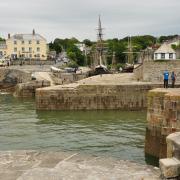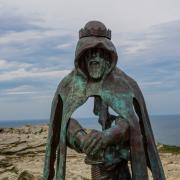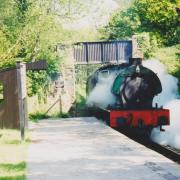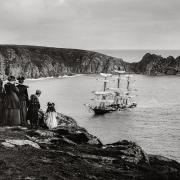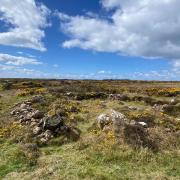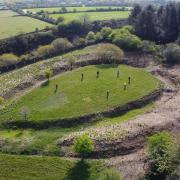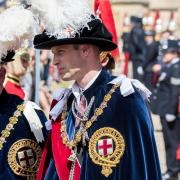Bard of Gorsedh Kernow, Merv Davey, shares stories of Cornish history.
Late in 1851 as the Great Exhibition in London was drawing to a close, visitors were greeted with the sight of an elderly Cornish woman in traditional fishwife’s costume replete with her basket. It transpired that Mary Kelynack (sometimes written Callinack), at the age of 84, had walked to London to protest because the local authorities failed to provide her with the state pension to which she was entitled through her late husband’s work as a fisherman. It had taken her five weeks to walk the 350 miles from her home in Newlyn and she became a media sensation with a series of different stories appearing in the press. She seems to have petitioned the Lord Mayor of London and come to the attention of Queen Victoria and Prince Albert; she may even have met the Queen. The story goes that she was given five shillings to pay for her journey home, but decided to walk back and save the money!

Her story became the subject of a popular song An Aged Dame of Cornish Fame composed by Sydney Nelson in 1852 and reached Australia in the form of a dance tune called The Mary Callinack Polka written by Henry W. Goodban of Sydney. Although she died in poverty a few years later she was still sufficiently well remembered for her death to be announced in the national press. In Cornwall she became part of the fishwives’ folklore and appeared on postcards that were still being printed and circulated well into the 20th century. Her story was retold in song again in Richard Gendall’s Mary Kelynack which was recorded and popularised by Cornish singer Brenda Wootton in the 1980s. Courtesy of a manuscript fragment in Truro Museum’s Courtney Library a version of Harry Goodban’s tune has joined other 19th century polkas in the repertoire of Cornish traditional music.
Strictly speaking it is the popular press that coined the term ‘fishwives’ and in Cornwall they were called ‘fishjousters’, a dialect expression for someone who collected the fish from the fishing boats in baskets to deliver and sell. They were an important part of the fishing industry throughout Cornwall and there is even a painting of them in their distinctive costume selling fish at the market well inland at Launceston. It is in Newlyn and Penzance where they really captured the eye and the imagination of both the early photographers and the Art Colony in the late 19th Century leaving us with a wonderful visual record of Cornish traditional costume.

The striking feature of the fishjouster’s costume was the large, black felted hat which was specially shaped to hold a broad strap in place on the forehead which in turn supported the cowal, a large fish basket carried on their backs. Brightly coloured short shawls, often with a check or tartan weave, were worn and fastened just under the chin so that they fell away from the chest and allowed the arms full movement for work.
The use of tartans is interesting. In Mary Kelynack’s time it was a simple weave handed from generation to generation without any specific pattern or design. Today tartans are used to represent Celtic identity and heritage around the globe, mostly Scottish but there are also registered tartans for Ireland, Wales, The Isle of Man and Brittany as well as Cornwall. The legend of the tartan is that it was widely used as a weaving design by the Celtic tribes that once lived throughout Briton. Mediterranean travellers who first came into contact with these tribes remarked upon this weave and described it as speckled. On learning that the native Celtic word for speckled was ‘brith’ they called the inhabitants ‘Brithons’ which gave rise to the term Britons and ultimately Britain itself. Without clear written records from two millennia or more back in time it is doubtful that this story can ever be proven, but sometimes what people thought and believed is equally important.
Mary Kelynack would doubtless have been fascinated to learn that a century after her expedition to London a Cornish National Tartan would be designed and registered, quickly followed by the Dress, Hunting and St Piran’s Tartan. Cornish tartans are a modern expression of Cornish identity but the fishjousters’ costume does connect us with a much older tradition. One suspects that Mary would also have recognised the resonance between her story and the challenges facing traditional industries in Cornwall and their relationship with central government today!
Traditional dress tells us much Cornwall’s history and heritage for more information visit cornwallheritagetrust.org




